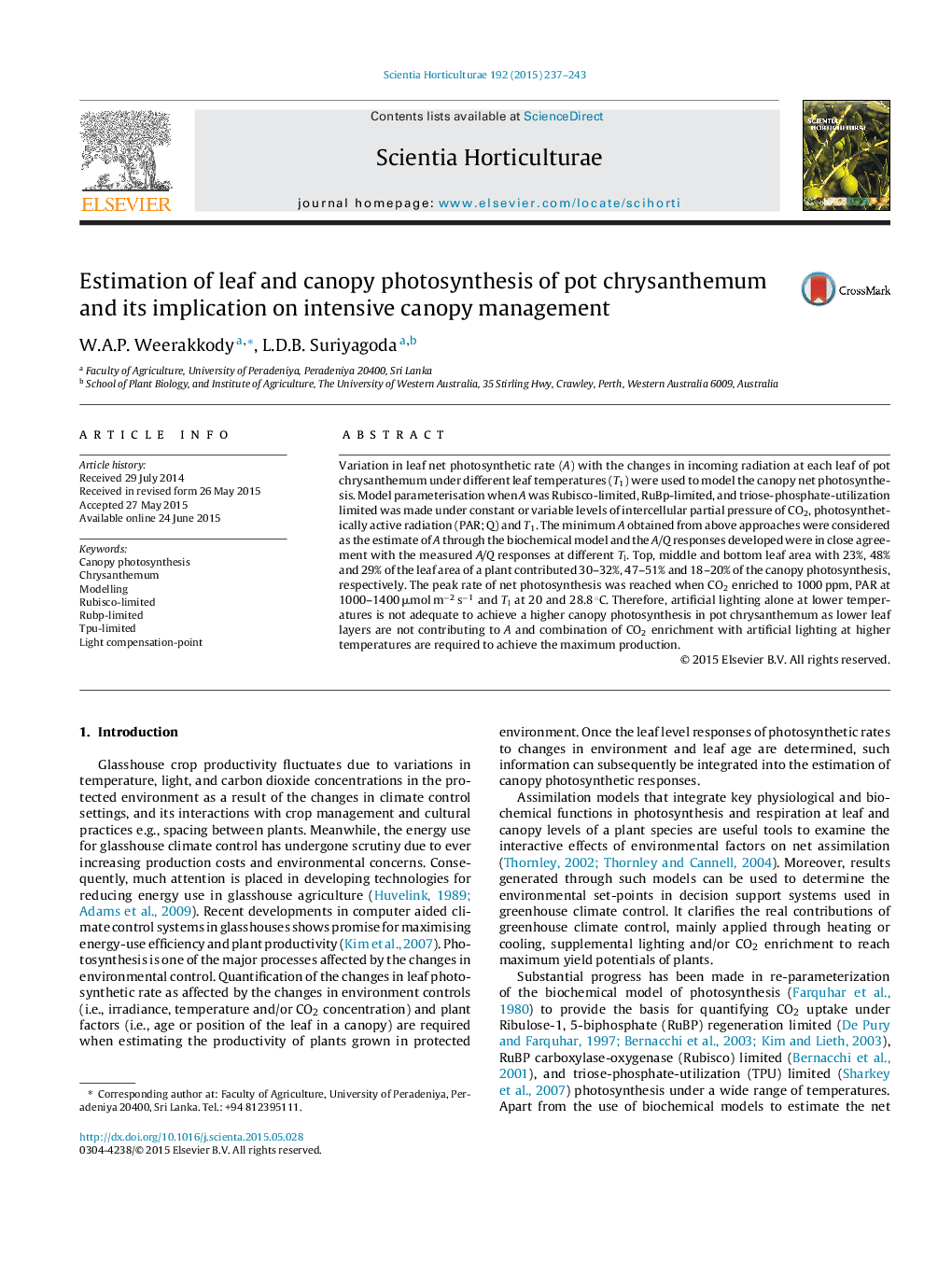| Article ID | Journal | Published Year | Pages | File Type |
|---|---|---|---|---|
| 4566254 | Scientia Horticulturae | 2015 | 7 Pages |
•Radiation distribution and canopy photosynthesis of chrysanthemum were studied.•Data were incorporated to a biochemical model to estimate net photosynthetic rate (A).•Estimated A through the biochemical model had a strong fit with measured values.•CO2 enrichment is beneficial for increasing A under high irradiance.•Limitations of the biochemical model are also ed.
Variation in leaf net photosynthetic rate (A) with the changes in incoming radiation at each leaf of pot chrysanthemum under different leaf temperatures (T1) were used to model the canopy net photosynthesis. Model parameterisation when A was Rubisco-limited, RuBp-limited, and triose-phosphate-utilization limited was made under constant or variable levels of intercellular partial pressure of CO2, photosynthetically active radiation (PAR; Q) and T1. The minimum A obtained from above approaches were considered as the estimate of A through the biochemical model and the A/Q responses developed were in close agreement with the measured A/Q responses at different Tl. Top, middle and bottom leaf area with 23%, 48% and 29% of the leaf area of a plant contributed 30–32%, 47–51% and 18–20% of the canopy photosynthesis, respectively. The peak rate of net photosynthesis was reached when CO2 enriched to 1000 ppm, PAR at 1000–1400 μmol m−2 s−1 and Tl at 20 and 28.8 °C. Therefore, artificial lighting alone at lower temperatures is not adequate to achieve a higher canopy photosynthesis in pot chrysanthemum as lower leaf layers are not contributing to A and combination of CO2 enrichment with artificial lighting at higher temperatures are required to achieve the maximum production.
